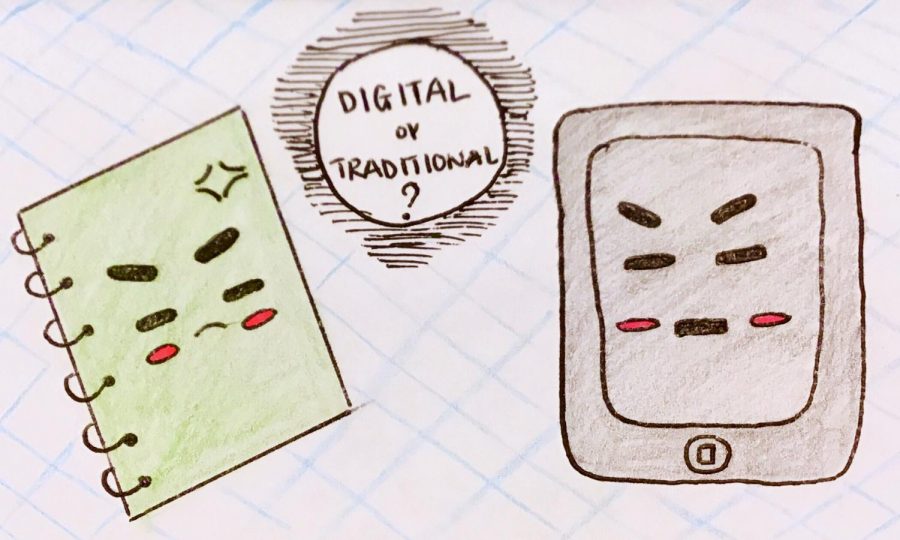Digital or Traditional ?
Taking notes for class is essential for a student. However, in this new age, people now have a choice between mainly two formats: digital notes or paper notes. This month, Tartans spoke about their preferences between the two and shared methods for jotting down class information.
Before getting to the big question, Director of Educational Technology Dena Maye suggested a few pros and cons for digital and paper notes. For paper, Maye mentioned that students can write in their own specific way that they understand but that some students may lose a lot of paper and find themselves with disorganized notes.
Maye could not think of any digital cons, but for pros she said that digital work is always accessible to students and more legible, “For those who have bad handwriting that they can’t read, having typed notes may be easier to read,” chuckled Maye.
Recent studies about note taking during lectures have shown that students evidently learn and store more information in their brains when handwriting notes of a class lecture.
Asked whether they preferred digital or paper notes, students shared interesting answers. Senior Emily Salmonsen said that even though she prefers digital notes, she finds paper notes “much better for remembering things.”
Sophomore Kiyo Kariya chose digital notes because “it’s easier and faster to type words.”
In contrast, both students suggested the opposite of their preferences as the medium they thought most students would likely choose.
“I think many students may prefer to take handwritten notes because they have a specific format that they write their notes in that makes sense to them,“ explained Kariya.
Maye thought that students would choose digital notes and specifically applications like Notability, Google Docs, and Microsoft Word, since they were familiar with them. She also suggested Microsoft OneNote as a good option that students may not know much about.
The senior and the sophomore offered some tips for effective note taking. Salmonsen urged students not to write down the teachers words word-for-word but to “just jot down key bits [using abbreviations].”
Kariya advised students to “summarize what you are taking notes on and then add bullet point details. This will shorten the amount of notes you need to write or type, and it will eliminate any unnecessary information.”
In addition to the two LOTAs’ advices, Maye explained that it is important not only to take notes, but also to organize them. She expressed the fact that students need organization in their notes so that they are “not just there.”
Whether it be digital or traditional, students’ choices for note taking should be what is best for them and used to their advantage in remembrance that organization is key.

From the class of 2022, Riana Tadonki is a Tartan who reports for the Tartan Times. She enjoys most school subjects such as math and joined Multimedia...


